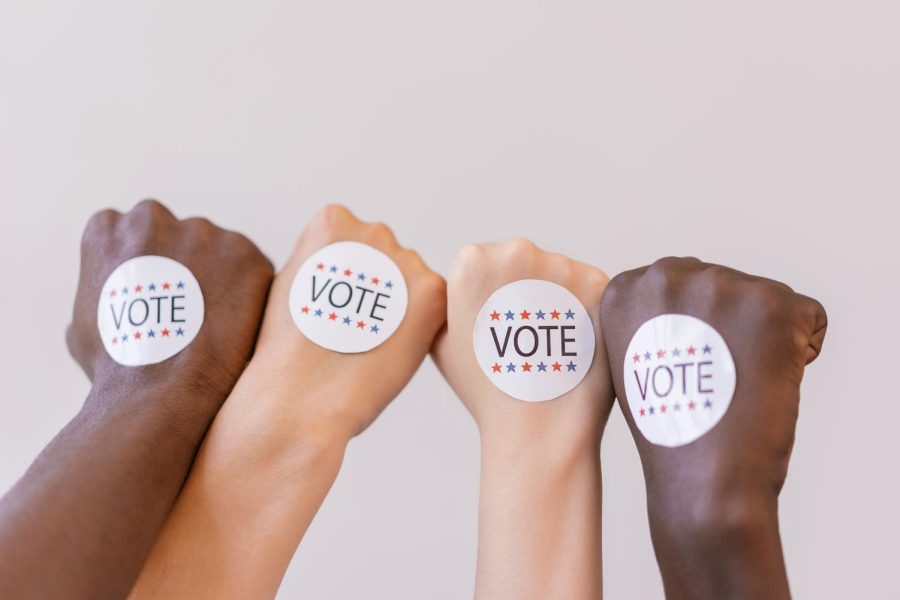GROSSMONT COLLEGE –The availability of etextbooks is increasing, and the Grossmont bookstore started selling them during the Fall 2010 semester. Even with traditional textbooks there were choices – buy new or used? Rent or sell back? The best textbook choice will depend on how tech savvy you are, what you want to carry with you, and how you use books. Do you highlight and write notes in the margins? Do you have a laptop and already use it to take notes in class? Do you want to keep your textbooks for future reference? Answers to these questions will help you decide the best choice of textbook for your situation.
First – a disclaimer. This tech market is changing rapidly – by the time you read this, there will likely have been updates, new products, and other changes. Still, the basic questions will remain relevant.
Traditional books – students’ backpack are full of them, they are found in the library and bookstores, and everyone knows how they work. They are also bulky and increasingly more expensive. Can high-tech electronics help? Well, storing lots of textbooks on a single device can help cut down on bulk, and ebooks are often delivered electronically – which is fast and free. But if you factor in the cost of a reader, plus realize that ebooks are usually not the lowest cost textbook available, it’s going to be hard to justify etextbooks on the basis of saving money. However, if you already have a computer, are reasonably tech savvy, and would like to highlight things electronically or take advantage of built-in searching, dictionaries, or text-to-speech capabilities, then etextbooks might be worth checking into.
| TRADITIONAL TEXTBOOKS | |
| Pro | Con |
| Widely available | Heavy, bulky |
| Found new or used | Can be expensive |
| No electronic equipment needed | Can be out of stock |
| Can write in margins | Excessive markings can reduce buyback price |
| Can sell back or lend | |
| Many available in library | |
| With care, can last for hundreds of years | |
| eTEXTBOOKS | |
| Pro | Con |
| Never out of stock, no wait for shipping | Computer or ebook reader needed |
| Many books fit on a single computer/reader | Cannot sell back or lend |
| Integrated dictionary | In-class use requires a portable computer |
| Can electronically highlight or annotate | Copying/printing usually restricted |
| Sometimes annotations can be shared | eBook readers are B&W, need computer for color |
| Can have web or multimedia tie-ins | Obsolescence could make book files unavailable |
| Some have text-to-speech reader | |
| Environmentally friendly | |
| Books can often be downloaded wirelessly | |
Textbook costs just keep going up. There are websites like http://www.campusbooks.com/, http://book.ly, http://www.rentscouter.com/, http://www.bigwords.com/, http://www.collegebookrenter.com/, http://www.campusbooks.com/, http://www.chegg.com, http://www.cheap-textbooks.com/, and others to help you find deals on buying or renting textbooks.
What is the lowest cost overall depends on your specific books, how many are available, whether a new edition comes out right before or right after you get your textbook, and whether or not you want to keep the textbook. When looking for books, don’t underestimate the effort put in (by your local bookstore) to make sure you get the right textbooks, and the right editions, for your classes. The cost estimates below are referenced to the “list price” – the full price of a new textbook.
| COST COMPARISONS (total cost after renting, or buying and selling back, etc.) | ||
| Buy print book – new | 80-100% of list | |
| Buy print book – used | 50-75% | |
| Buy print book new and sell back | 40-50% | |
| Buy eTextbook | 40-50% | Watch out that you don’t get a rental if you expected a more permanent ebook |
| eTextbook rental | 40-50% | |
| Print book rental | 30-40% | Buy-back price is preset, but excessive markings can result in extra charges. |
| Buy print book used and sell back | 20-40% | Can be the least expensive, but depends on buy-back price |
To better accommodate displaying charts, graphics, and pictures, many etextbooks require a computer. For example the Barnes & Noble NOOKstudy books – from the Grossmont bookstore – do not work with the B&N nook reader. However, Amazon Kindle etextbooks work with their Kindle readers, and even better on the Kindle DX with its larger screen. Both Amazon and Barnes & Noble provide free applications for computers and many mobile devices that allow access to your ebooks.
There are many varieties of ebook readers, and several different formats for ebooks. Here is a good overview of readers, and Wikipedia has comparison charts of features and file formats. While there are open standard formats, many of the large companies in this market try to establish a proprietary “walled garden” to keep you buying ebooks only from their store, e.g. the Amazon Kindle and the Barnes & Noble nook do not read each other’s ebook files. Most readers read PDF, text, HTML, and play MP3 files, while the Kindle is the notable exception to readers that support the open standard ePub book format.
Electronic book files tend to blur the lines of owning vs. leasing. Copying and printing of ebooks is usually restricted – and they can’t be resold. Electronic readers are “tethered devices”, regularly connecting to a central location for updates. This allows near instant downloads, synchronization between an ereader device and your computer, and sometimes sharing of files. But in one incident from 2009, Amazon remotely deleted copies of book files that had been improperly offered for sale in the US. This caused some uproar, and while Amazon has stated they won’t do it again, the technical capability to accomplish this exists in all types of these devices. The evolution of the music from owning physical records and discs, to downloading MP3 files, to subscribing to a music service like Rhapsody may provide some insight into how information in the form of electronic books could change in the future.
| eBOOK READERS | Screen characteristics | ||
| Regular screen eReader | $150-$200 | 6” | B&W – 800 x 600 pixels |
| Large screen eReader (Kindle DX) | $350 | 9.7” | B&W – 1200 x 824 |
| Netbook computer | $300-$500 | 10” | Color – 1024 x 600 |
| iPad tablet computer | $500-$900 | 9.7” | Color – 1024 x 768 |
| Laptop computer | $500-$2000 | 12”-17” | Color – 1366 x 768 to1920 x 1080 |
A 6” screen is slightly smaller than the print area of a small paperback book. A 10” screen is somewhat smaller than the page of a small magazine like Time or People. As display technology improves, dedicated ereaders will be getting larger and/or color screens. Or maybe iPad-like multi-function devices will displace dedicated ereaders. In either case, development is progressing towards lighter, thinner and more flexible multi-color, low-power displays capable of handling better graphics and showing video.
*
Bratt is a reference navigator in the learning and technology resources department of the Grossmont College Library. He may be reached at [email protected]








